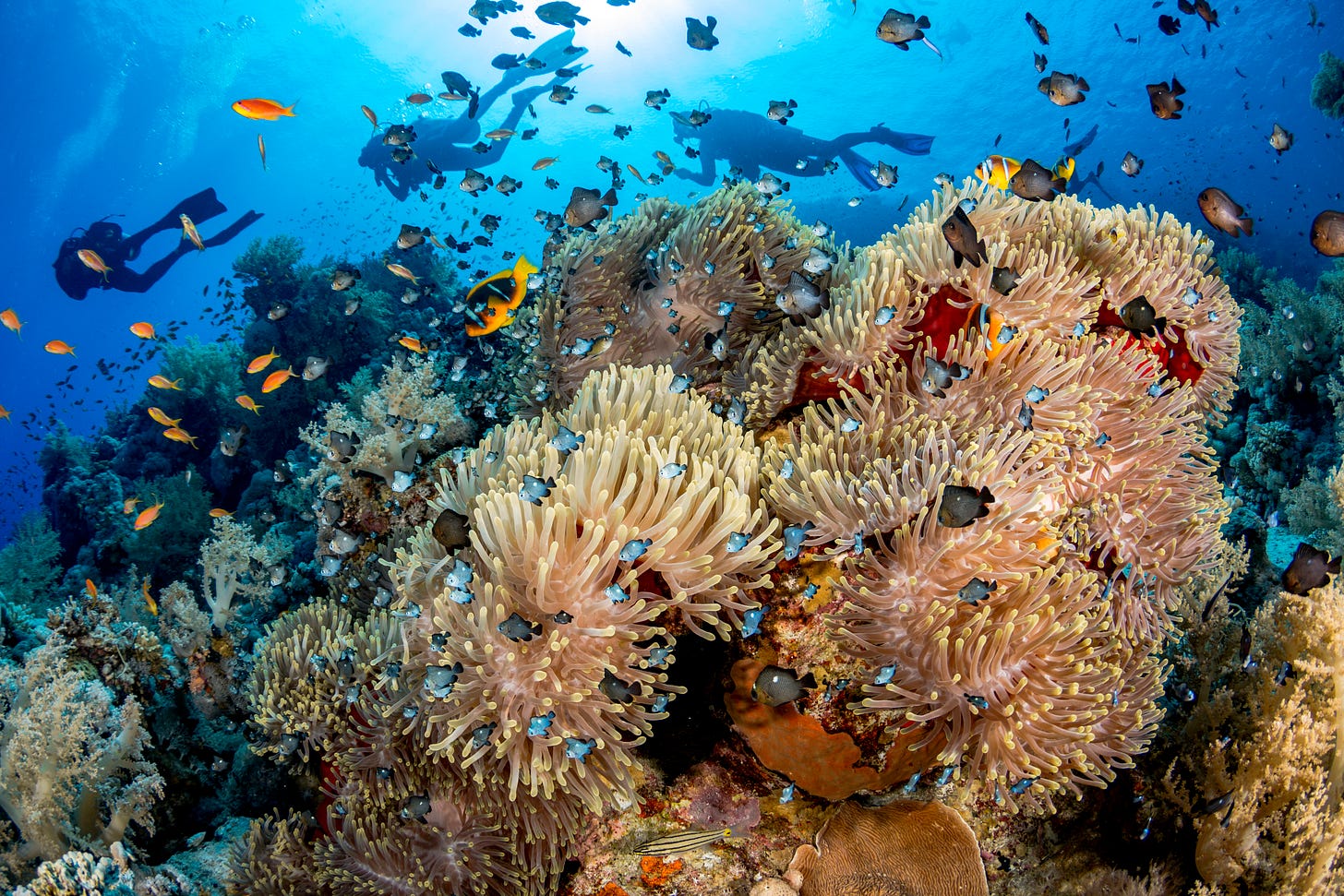The race to save corals
As corals now undergo a fourth global mass bleaching, their future lies in the hands of some creative scientists.
Welcome back to The Net-Zero Brief, a weekly newsletter discovering the roadmap to a net-zero society. Last week, you learned about how natural asset companies (NACs) can help quantify the value of ecosystem services. Today, we’re talking about the urgent task of saving the world's corals.

A dive in a healthy coral reef reveals a fascinating world. It's a place teeming with vibrant colors, diverse shapes and structures, and a constant buzz of activity. Corals are vital ecosystems that support a quarter of all marine life on Earth. And they are not just important for those living below the surface. Reefs are crucial storm protectors, provide food and income for millions of people, and a library of genetic diversity. But as the ocean gets warmer and more acidic, corals are on the edge of extinction.
50% of the world's corals are already gone. The ones left, are fighting for survival. The first time scientists noticed coral bleaching over large areas was in the 1980s around the Caribbean. The process where the coral animal expels the algae in its tissue and turns white perplexed the researchers. This spring, coral reefs are suffering from the fourth global mass bleaching event. And this one is expected to be the most widespread and extensive on record.
For the researchers dedicating their lives to finding ways to save the corals, the events are devastating. To see the marvel of nature turn into an empty and pale ghost town is a heartbreaking experience. And the problem is crucial to address for all of us. As Dr. Mary Hagedorn, marine biologist at the Smithsonian Institution, puts it: "The cost of doing nothing is enormous, because we could lose one of the most significant ecosystems on our planet".
A collapse of an ecosystem like coral reefs pushes the world in a dangerous direction. Coral reefs help reduce the incoming wave energy by up to 97%. A loss of that protecting infrastructure would leave coastal communities more vulnerable to storms and potentially doubling annual flood damage on a global scale. Moreover, the coral reefs are intertwined with other vital ecosystems. For example, coral reefs are also important storm protectors for seagrass beds and mangrove forests - two major carbon sinks. This once again shows the interconnectedness of nature and how crossing one critical threshold can accelerate changes in the entire climate system.
This leads us to the inevitable question; how can we save the corals?
First of all, a global crackdown on greenhouse gas emissions is needed to give the corals a chance for survival. But the window of opportunity is closing fast. This forces scientists to take more drastic measures to give corals a chance to survive the heating ocean. Around the world, creative minds are using cutting-edge technology to help corals make a comeback. Let's look into four of these.
Identification of resilient corals
The coral reef in the Nikko Bay, Palau is a bright spot for coral scientists. There, corals live in water that has been naturally warm for millennia. It gives hope by showing that it's not the heat itself that is killing the corals - but the trauma of the rapid temperature change. Corals in the Nikki Bay area have naturally evolved to gain resilience to warmer temperatures and more acidic conditions. Scientists are now trying to understand how it happened and if there are specific genes that allow these corals to survive. Answers to those questions could help scientists understand what genes to breed for and transfer more heat-resistant corals to other places.
Cryopreservation
Cryopreservation is a process of preserving tissues at a very low temperature. Scientists are now pushing the boundaries of engineering and biology by applying the technology to the conservation of corals. Samples of corals are frozen down and stored in liquid nitrogen to provide an insurance policy for the future, creating something of a Noah's Ark for corals.
Creation of super corals
A team at the Hawaiʻi Institute of Marine Biology is leading a pioneering work on creating what they call 'super corals'. Corals are collected in the nearby ocean and put under an excruciating training regime. The idea is to put the corals under stress by increasing the temperature and level of acidity in the tanks where they are stored. Not so much that they die but are forced to adapt to the new environment. By doing this, the scientists hope that they will be able to put back corals to the reef with an increased ability to deal with stress.
Use of satellite data
A project in Belize uses data from NASA satellites to assess the vulnerability of the coral reef on the Belize coast. The data allow the scientists to see what areas are in a risk zone due to higher surface temperatures or cloudy water so that they can take action to protect them.
These innovative approaches give us hope. The question is now, how do we deploy them at scale in time?

